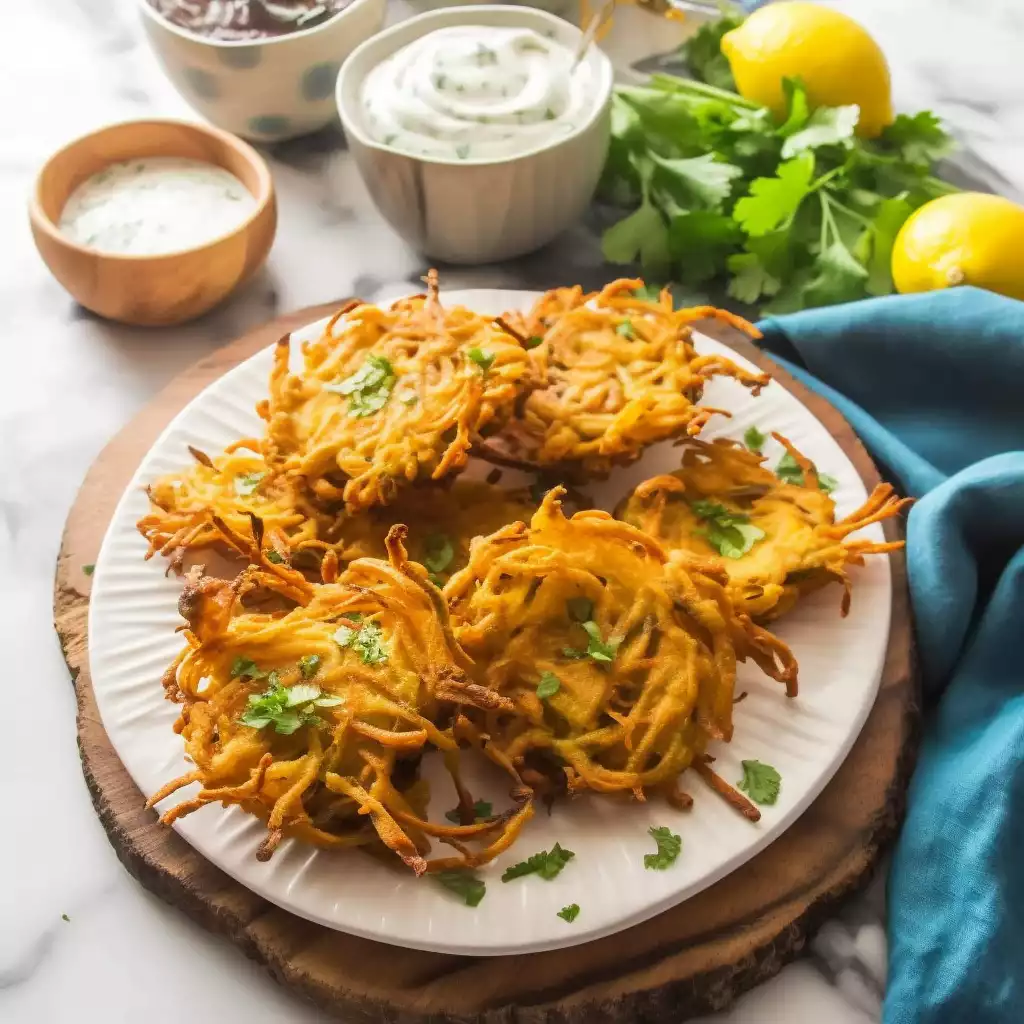
Onion bhaji, a beloved snack hailing from the streets of India, is a delightful dish that boasts a tantalizing blend of spices and textures.
Originating from Indian cuisine, these crispy, golden fritters are made from thinly sliced onions coated in a flavorful chickpea flour batter. With its roots deeply embedded in Indian culinary traditions, onion bhaji has gained popularity worldwide for its irresistible taste and simplicity.
Despite its exotic appeal, onion bhaji is surprisingly easy to make, making it an ideal recipe for home cooks eager to explore the vibrant flavors of Indian cuisine.
The combination of spices like cumin seeds, red chili powder, and garam masala adds depth and warmth to the dish, while the chickpea flour lends a crispiness that is utterly satisfying.
Whether you’re hosting a casual gathering or simply craving a flavorful snack, onion bhaji is sure to be a hit.
Expert Tip: Don’t skip the step of thinly slicing the onions, as this ensures even cooking and a pleasant texture in the bhajis.
Onions: Thinly sliced onions form the base of this recipe, lending their sweet and savory flavor to the bhajis.
Chickpea Flour: Also known as besan, chickpea flour provides a nutty flavor and crispy texture to the batter.
Baking Powder: Helps the bhajis achieve a light and airy texture.
Cumin Seeds: Adds a warm, earthy flavor to the batter.
Chilli Powder: Infuses the bhajis with a subtle kick of heat.
Turmeric Powder: Contributes a vibrant yellow hue and a hint of bitterness to the dish.
Garam Masala: A fragrant spice blend that adds complexity and depth of flavor.
Salt: Enhances the overall taste of the bhajis.
Coriander: Freshly chopped coriander leaves provide a burst of freshness and color to the dish.
Water: Used to create the batter to the desired consistency.
Oil: For frying the bhajis to crispy perfection.
Expert Tip: Adding a pinch of baking soda to the batter can help achieve a lighter texture.
Expert Tip: For extra crispy bhajis, make sure the batter is thick enough to coat the back of a spoon.
Yes, you can prepare the batter in advance and store it in the refrigerator for up to a day. However, it’s best to fry the bhajis just before serving to ensure they remain crispy.
While chickpea flour is traditional for onion bhajis, you can experiment with other flours like all-purpose flour or rice flour. Keep in mind that the texture and flavor may vary.
Ensure the oil is hot enough before frying the bhajis, and avoid overcrowding the pan. Fry them in small batches to maintain the temperature of the oil and achieve crispy results.
While deep-frying yields the crispiest results, you can also try shallow-frying or baking the bhajis for a lighter alternative. However, the texture may differ slightly.
Absolutely! Feel free to adjust the spice levels according to your preference or experiment with additional spices to tailor the flavor to your liking.
Here are some more recipes for you to enjoy! If you my recipes don’t forget to rate and leave a comment.
If you have any recipe suggestions, please do not hesitate to ask me. A great way to stay in contact with me is through Instagram, Facebook, Twitter and YouTube. Don’t forget to tag me @CookwithNabeela in your recipe photos!

Subscribe now to receive my latest recipes directly in your inbox. Stay up-to-date and never miss out!

I love to cook! I want to share with you my favourite, delicious family-friendly recipes. I want to inspire you to create fantastic food for your family every day.
Add your first comment to this post